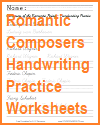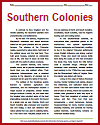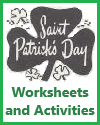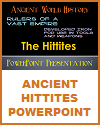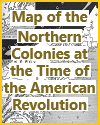Society, Schools, and Culture |
A significant factor deterring the emergence of a powerful
aristocratic or gentry class in the colonies was the ability of
anyone in an established colony to find a new home on the
frontier. Time after time, dominant Tidewater figures were
obliged to liberalize political policies, land-grant
requirements, and religious practices by the threat of a mass
exodus to the frontier.  Of equal significance for the future were the foundations of
American education and culture established during the colonial
period. Harvard College was founded in 1636 in Cambridge,
Massachusetts. Near the end of the century, the College of
William and Mary was established in Virginia. A few years later,
the Collegiate School of Connecticut, later to become Yale
University, was chartered. Of equal significance for the future were the foundations of
American education and culture established during the colonial
period. Harvard College was founded in 1636 in Cambridge,
Massachusetts. Near the end of the century, the College of
William and Mary was established in Virginia. A few years later,
the Collegiate School of Connecticut, later to become Yale
University, was chartered.Even more noteworthy was the growth of a school system maintained by governmental authority. The Puritan emphasis on reading directly from the Scriptures underscored the importance of literacy. In 1647 the Massachusetts Bay Colony enacted the "ye olde deluder Satan" Act, requiring every town having more than 50 families to establish a grammar school (a Latin school to prepare students for college). Shortly thereafter, all the other New England colonies, except for Rhode Island, followed its example. The Pilgrims and Puritans had brought their own little libraries and continued to import books from London. And as early as the 1680s, Boston booksellers were doing a thriving business in works of classical literature, history, politics, philosophy, science, theology, and belles-lettres. In 1638 the first printing press in the English colonies and the second in North America was installed at Harvard College. The first school in Pennsylvania was begun in 1683. It taught reading, writing, and keeping of accounts. Thereafter, in some fashion, every Quaker community provided for the elementary teaching of its children. More advanced training – in classical languages, history, and literature – was offered at the Friends Public School, which still operates in Philadelphia as the William Penn Charter School. The school was free to the poor, but parents were required to pay tuition if they were able. In Philadelphia, numerous private schools with no religious affiliation taught languages, mathematics, and natural science; there were also night schools for adults. Women were not entirely overlooked, but their educational opportunities were limited to training in activities that could be conducted in the home. Private teachers instructed the daughters of prosperous Philadelphians in French, music, dancing, painting, singing, grammar, and sometimes bookkeeping. In the 18th century, the intellectual and cultural development of Pennsylvania reflected, in large measure, the vigorous personalities of two men: James Logan and Benjamin Franklin. Logan was secretary of the colony, and it was in his fine library that young Franklin found the latest scientific works. In 1745 Logan erected a building for his collection and bequeathed both building and books to the city. Franklin contributed even more to the intellectual activity of Philadelphia. He formed a debating club that became the embryo of the American Philosophical Society. His endeavors also led to the founding of a public academy that later developed into the University of Pennsylvania. He was a prime mover in the establishment of a subscription library, which he called "the mother of all North American subscription libraries." In the Southern colonies, wealthy planters and merchants imported private tutors from Ireland or Scotland to teach their children. Some sent their children to school in England. Having these other opportunities, the upper classes in the Tidewater were not interested in supporting public education. In addition, the diffusion of farms and plantations made the formation of community schools difficult. There were only a few free schools in Virginia. The desire for learning did not stop at the borders of established communities, however. On the frontier, the Scots-Irish, though living in primitive cabins, were firm devotees of scholarship, and they made great efforts to attract learned ministers to their settlements. |
Literary production in the colonies was largely confined to
New England. Here attention concentrated on religious subjects.
Sermons were the most common products of the press. A famous
Puritan minister, the Reverend Cotton Mather, wrote some 400
works. His masterpiece, Magnalia Christi Americana,
presented the pageant of New England's history. The most
popular single work of the day was the Reverend Michael
Wigglesworth's long poem, "The Day of Doom," which described the
Last Judgment in terrifying terms. In 1704 Cambridge, Massachusetts, launched the colonies' first successful newspaper. By 1745 there were 22 newspapers being published in British North America. In New York, an important step in establishing the principle of freedom of the press took place with the case of John Peter Zenger, whose New York Weekly Journal, begun in 1733, represented the opposition to the government. After two years of publication, the colonial governor could no longer tolerate Zenger's satirical barbs, and had him thrown into prison on a charge of seditious libel. Zenger continued to edit his paper from jail during his nine-month trial, which excited intense interest throughout the colonies. Andrew Hamilton, the prominent lawyer who defended Zenger, argued that the charges printed by Zenger were true and hence not libelous. The jury returned a verdict of not guilty, and Zenger went free. The increasing prosperity of the towns prompted fears that the devil was luring society into pursuit of worldly gain and may have contributed to the religious reaction of the 1730s, known as the Great Awakening. Its two immediate sources were George Whitefield, a Wesleyan revivalist who arrived from England in 1739, and Jonathan Edwards, who served the Congregational Church in Northampton, Massachusetts. Whitefield began a religious revival in Philadelphia and then moved on to New England. He enthralled audiences of up to 20,000 people at a time with histrionic displays, gestures, and emotional oratory. Religious turmoil swept throughout New England and the middle colonies as ministers left established churches to preach the revival. Edwards was the most prominent of those influenced by Whitefield and the Great Awakening. His most memorable contribution was his 1741 sermon, "Sinners in the Hands of an Angry God." Rejecting theatrics, he delivered his message in a quiet, thoughtful manner, arguing that the established churches sought to deprive Christianity of its function of redemption from sin. His magnum opus, Of Freedom of Will (1754), attempted to reconcile Calvinism with the Enlightenment. The Great Awakening gave rise to evangelical denominations (those Christian churches that believe in personal conversion and the inerrancy of the Bible) and the spirit of revivalism, which continue to play significant roles in American religious and cultural life. It weakened the status of the established clergy and provoked believers to rely on their own conscience. Perhaps most important, it led to the proliferation of sects and denominations, which in turn encouraged general acceptance of the principle of religious toleration. |
Directions: Read the text above, then answer the
questions below. |
|
1.
What was a significant factor deterring the emergence of a
powerful aristocratic or gentry class in the colonies? 2. What university was founded in 1636 in Cambridge, Massachusetts? 3. The Collegiate School of Connecticut goes by what name today? 4. A Latin school to prepare students for college was known as a __________. 5. What 1647 Massachusetts law established the colony’s first public schools? a. Latin School Creation Bill b. No Chylde Lefte Behynde c. Public Education Act d. Ye Olde Deluder Satan Act 6. In 1638, where was the first printing press in the English colonies installed? 7. When was the first school in Pennsylvania begun? 8. What Philadelphian formed a debating club which evolved into the American Philosophical Society? 9. Who wrote Magnalia Christi Americana, a history of New England? 10. What prominent lawyer defended John Peter Zenger in a trial for seditious libel? 11. What is the name given to the religious reaction of the 1730s? |
Click
here
to print this worksheet. |
 |
|---|
| Colonial Period Books and Films | Colonial Period Learning and Study Games |
| Colonial Period Image Galleries | Colonial Period Outlines and PowerPoints |
| Colonial Period Miscellany | Colonial Period Worksheets |
Text courtesy of the U.S. State Department,
Bureau of International Information Programs, 2005 |


